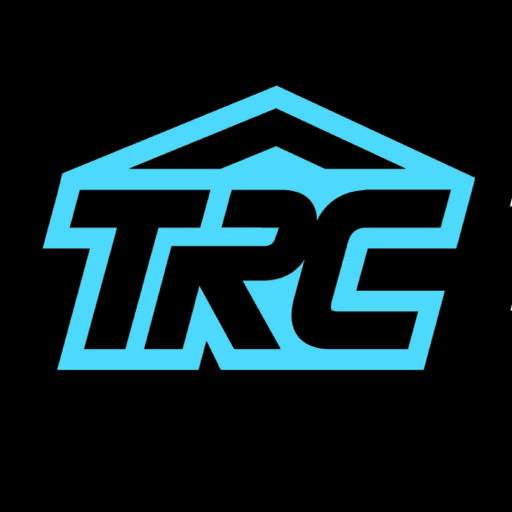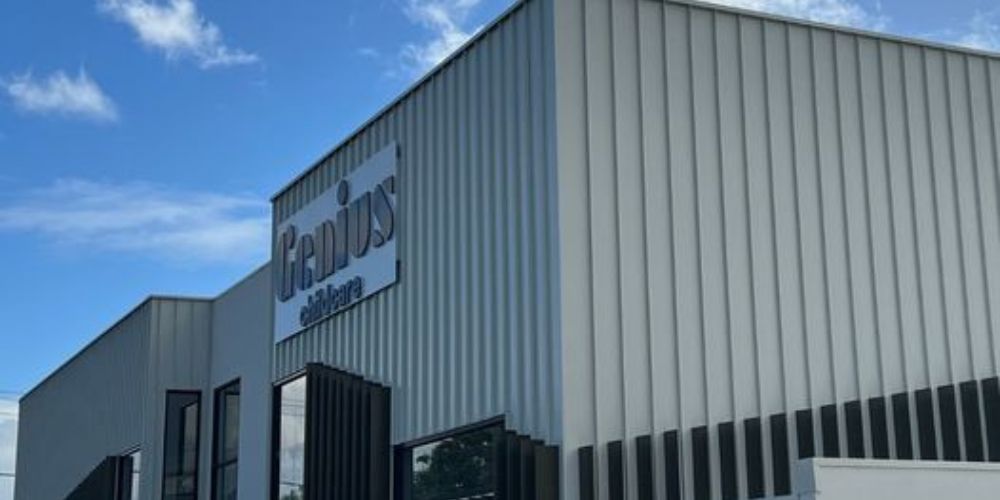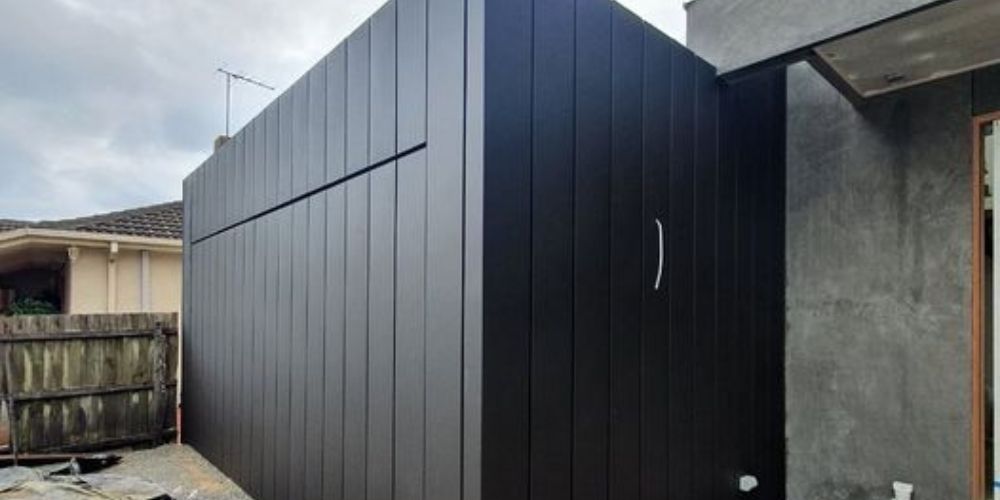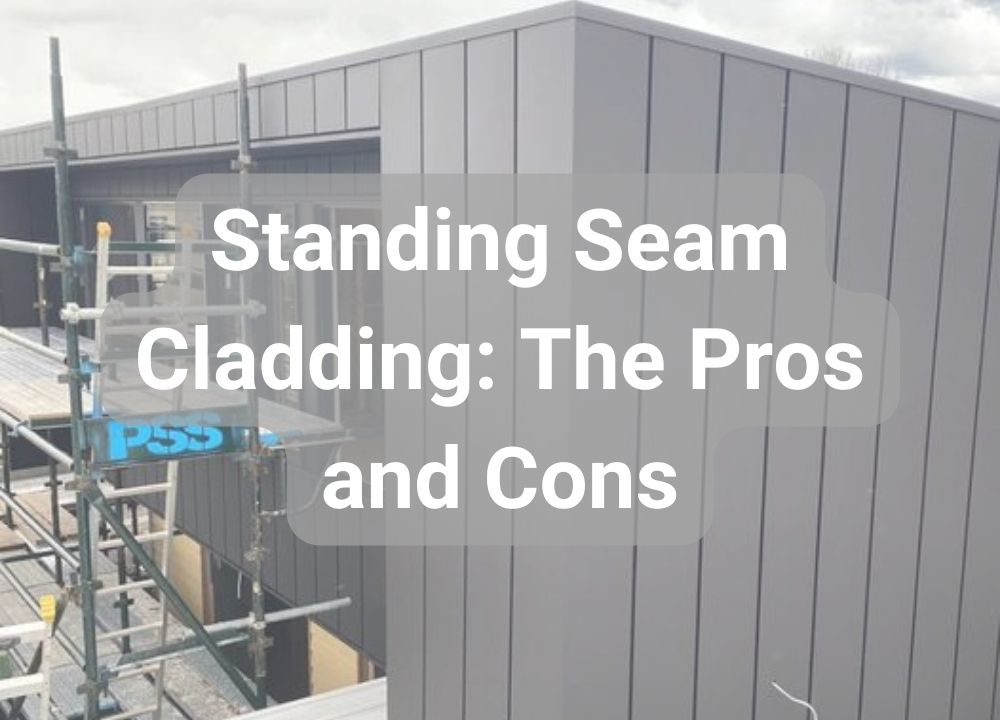Standing Seam Cladding: The Pros and Cons
Since it has been used for so long, this metal cladding material has earned a reputation for dependability and elegance.
Standing seam cladding comprises vertical rows of interconnecting metal panels extending the length of a building’s walls or roof. The elevated seams that link these panels, which rise above the level of the metal, give the finished product a distinctive appearance that has grown in popularity in both commercial and residential buildings.
We’ll look at the advantages and disadvantages of standing seam cladding to help you better understand these factors and determine whether this type is the best option for your project. We have all the standing seam cladding information you need, whether you’re a builder, architect, or DIY enthusiast. So let’s get started and investigate this wonderful world of metal cladding!

Lance Mathews
In This Article

What is a Standing Seam Cladding?
Standing seam cladding is a metal cladding frequently utilized in commercial and residential construction. It consists of vertical rows of interconnecting metal panels that span the height of a building’s walls or roof. “Standing seam” refers to the elevated seams that join the panels and protrude above the metal.
Standing seam cladding is renowned for its robustness, ease of upkeep, and energy efficiency. Additionally, it is quite adaptable and can match various building colors and designs.
Standing seam cladding is aesthetically pleasing and offers the best weather protection and fire resistance.
Uses of Standing Seam Cladding
Several building applications can benefit from the versatility of standing seam cladding. Here are a few typical applications for standing seam cladding:
Roofing
Due to its toughness, weather resilience, and capacity to endure strong winds, standing seam cladding is frequently utilized in roofing applications. Both residential residences and commercial structures, such as offices and warehouses, frequently employ it.
Walls
In addition to offering aesthetic appeal and weather protection, standing seam cladding may be used as a wall cladding material. It is frequently used for external walls, inner walls, and building facades.
Soffits and Fascia
Fascia and soffits, the vertical and horizontal finishing components that join a building’s roof and walls, are frequently covered with standing seam cladding. These finishing touches offer a sleek aesthetic and moisture and insect protection.
Awnings and Canopies
Canopies and awnings may be made using standing seam cladding to provide shade and cover for external areas such as patios, sidewalks, and entrances.

Pros and Cons of Standing Seam Cladding
Pros
Long-lasting and durable
Standing seam cladding has a reputation for being strong and long-lasting. It is constructed from premium components like steel or aluminum and may last for decades with little upkeep.
Little maintenance
Throughout its existence, standing seam cladding requires relatively little maintenance. It can tolerate exposure to severe weather and is resistant to fading, cracking, and warping.
Energy-efficient
Standing seam cladding can increase a building’s energy efficiency by minimizing heat absorption and reflecting sunlight. This may result in cheaper energy costs and less environmental impact.
Flexible in terms of customization and design
Standing seam cladding comes in various hues, surfaces, and profiles. As a result, the cladding may be highly customized and matched to the style and appearance of the structure.
Excellent weather protection is provided
Standing seam cladding’s exceptional weather protection features include resistance to rain, wind, snow, and hail. Additionally, it is corrosion, mold, and mildew resistant.
Fire-resistant
Standing seam cladding can assist in shielding the structure from fire damage because it is a non-combustible material.
Environmentally friendly and sustainable
Standing seam cladding is an eco-friendly and sustainable option since it is often built from recycled materials and is completely recyclable at the end of its useful life.
Cons
High initial costs
Standing seam cladding can be more costly than other materials, such as vinyl or wood. However, endurance and low maintenance requirements mitigate the high initial cost.
Needs expert installation
Standing seam cladding has to be installed by a professional to be fitted correctly and function as intended. Poor installation may result in problems like leaks, canning of the oil, or waviness.
Few color options
Standing seam cladding comes in various colors, although there may be fewer alternatives than other cladding types.
It may only be suited for some construction types
Certain building types, particularly those with intricate wall or roof designs, might not be suitable for standing seam cladding. If you want to know if standing seam cladding is the best option for your structure, you should speak with a specialist.
It might not offer sufficient soundproofing
Standing seam cladding could not offer as much sound insulation as other cladding materials like brick or concrete.
Limited accessibility in some areas
It could be challenging to acquire supplies or qualified installers in areas where standing seam cladding is not widely accessible.
Frequently Asked Questions
Steel standing seam metal roofs have a 40-year manufacturer warranty and last 50 to 80 years. Standing seam roofing is placed in a manner that covers all the fasteners, making for a very clean, sleek appearance, a roof system that is highly safe and low-risk in terms of durability and leaks during its lifespan.
Yes, standing seam cladding may be erected on curved or arched roofs. Still, it needs specialized tools and knowledgeable installers to achieve a perfect fit and avoid problems like oil canning or waviness.
Yes, standing seam cladding may be put on walls and roofs, giving the entire building exterior a consistent appearance.
Standing seam cladding offers outstanding weather protection and is resistant to damage from wind-driven debris, making it a great choice for high-wind or hurricane-prone locations.
Key Takeaways
Standing seam cladding has several advantages: longevity, low maintenance requirements, energy efficiency, and improved weather protection. Additionally, it resists fire, is ecologically friendly, and is sustainable. However, some possible disadvantages include the expensive initial cost, the few available color possibilities, and the requirement for expert installation.
The choice of standing seam cladding will rely on several elements, including the kind of building, the location, the budget, and the preferred design. Before making a final selection, it is advised to get professional guidance. They can verify that the cladding is put correctly to prevent problems like oil canning or waviness.

